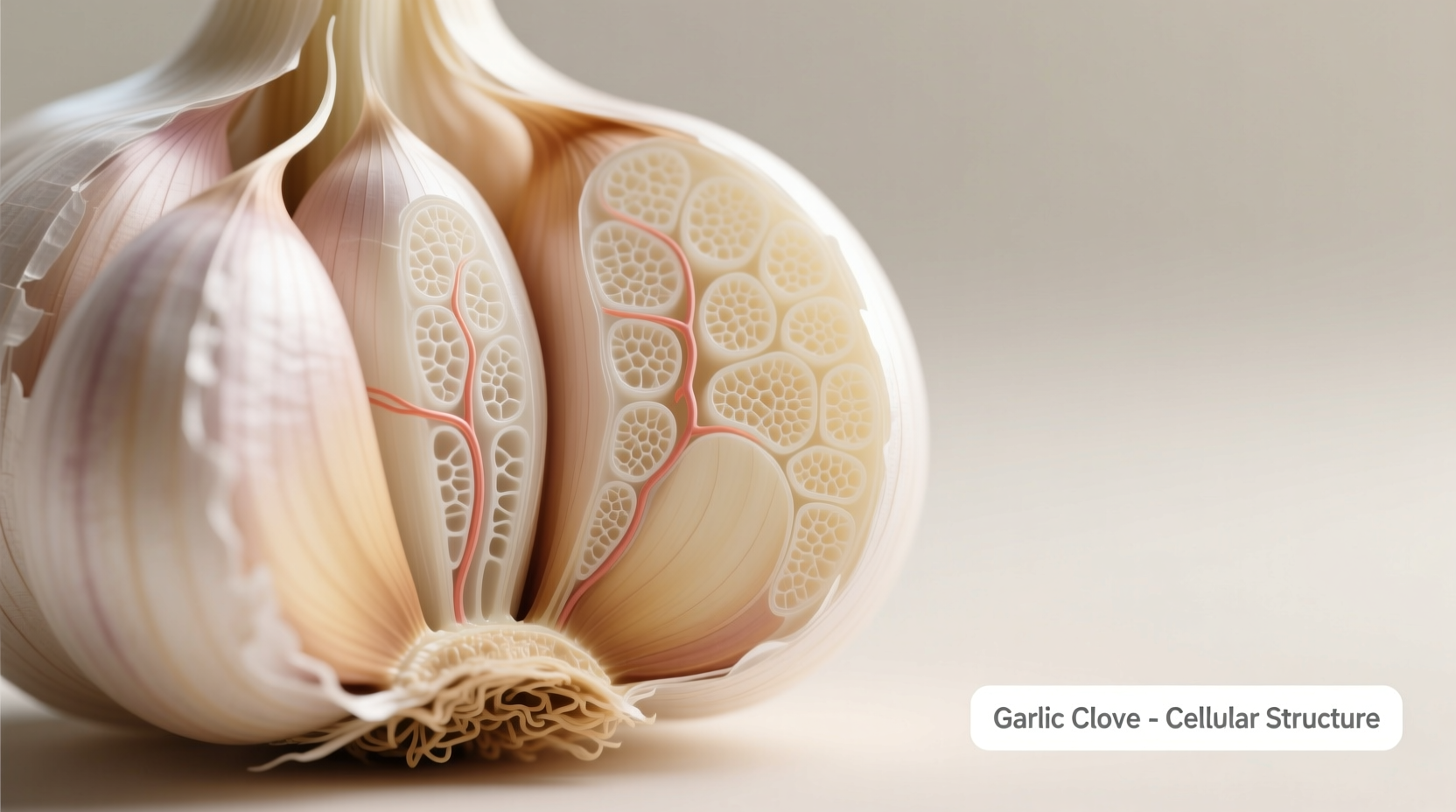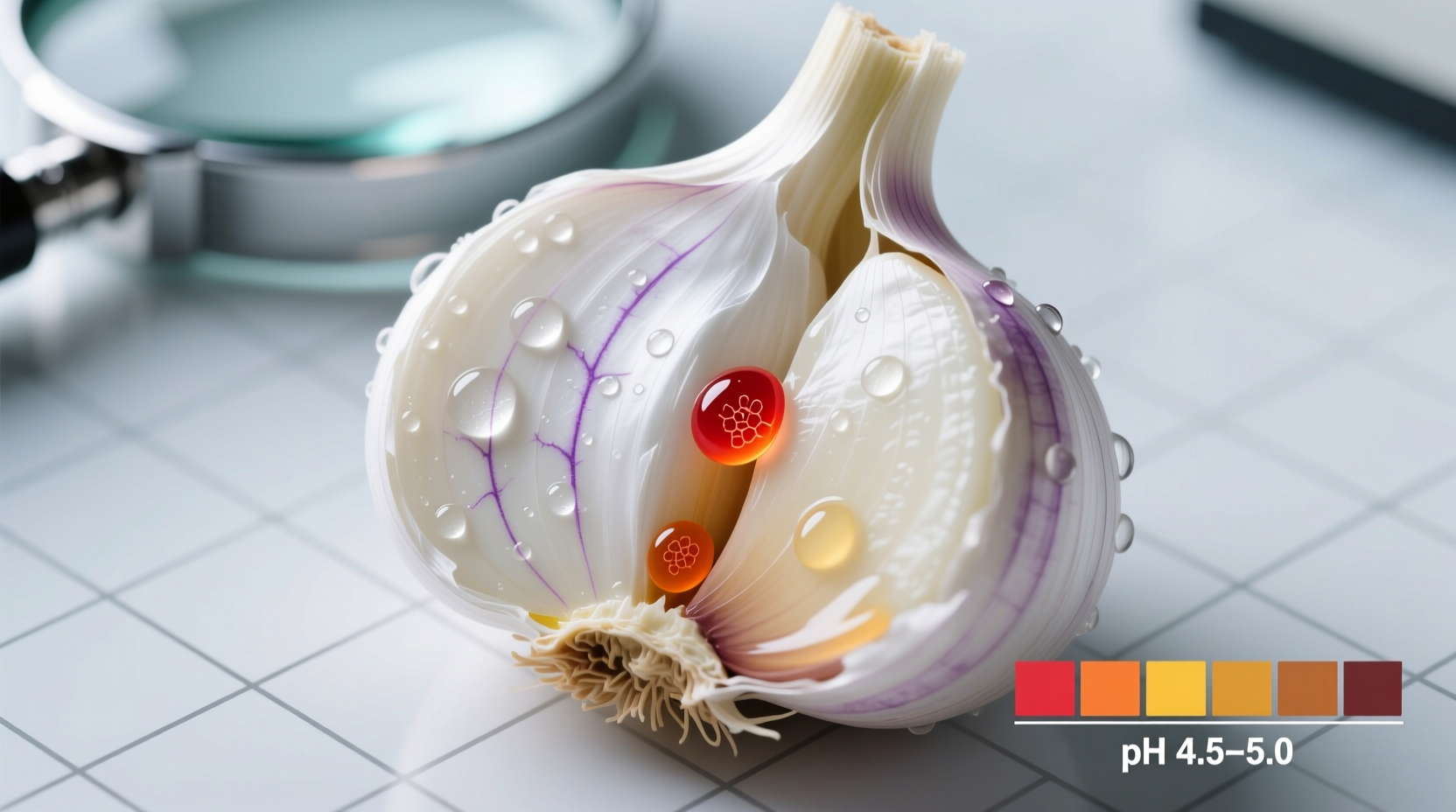No, garlic does not contain a compound called \"garlic acid.\" This is a common misconception—garlic's primary bioactive compound is allicin, formed when garlic is crushed or chopped. Understanding this distinction helps you maximize garlic's culinary and health benefits correctly.
Many people search for \"garlic acid\" expecting to learn about a specific compound responsible for garlic's distinctive properties. If you've encountered this term in supplements, health blogs, or casual conversation, you're not alone—but it's scientifically inaccurate. Let's clarify what's really happening in your garlic cloves and why this misunderstanding persists.
The Real Chemistry Behind Garlic's Power
When you cut, crush, or chew fresh garlic, an enzyme called alliinase converts alliin (a sulfur-containing amino acid) into allicin—the compound responsible for garlic's pungent aroma, flavor, and most studied health benefits. This reaction happens within seconds of damaging the garlic cells.
Allicin is unstable and quickly breaks down into other organosulfur compounds like diallyl disulfide and ajoene. These secondary compounds contribute to garlic's long-term health effects, including potential cardiovascular and immune system benefits.
| Actual Garlic Compound | Formation Process | Key Properties |
|---|---|---|
| Alliin | Naturally present in intact garlic | Odorless precursor compound |
| Allicin | Formed when garlic is damaged (crushed/chopped) | Responsible for garlic's characteristic smell and immediate biological activity |
| Diallyl disulfide | Breakdown product of allicin | Contributes to long-term health benefits, more stable than allicin |
| Ajoene | Further breakdown product | Studied for potential anti-clotting properties |
Where Did \"Garlic Acid\" Come From?
The term \"garlic acid\" appears to be a persistent misnomer with several possible origins:
- Marketing confusion: Some supplement manufacturers use \"garlic acid\" to describe standardized garlic extracts, creating consumer misunderstanding
- Linguistic translation issues: In some languages, the term for garlic's active compounds gets mistranslated as \"acid\"
- Chemical terminology mix-up: People confuse \"allicin\" with \"acid\" due to similar pronunciation
According to the National Center for Biotechnology Information, no scientific literature recognizes \"garlic acid\" as a valid chemical compound. The American Chemical Society's Journal of Agricultural and Food Chemistry consistently refers to allicin and its derivatives when discussing garlic's bioactive components.

Why This Distinction Matters for Your Health
Understanding that allicin—not \"garlic acid\"—is garlic's key compound affects how you use garlic for maximum benefit:
- Cooking technique: Crushing garlic and letting it sit for 10 minutes before heating preserves more allicin
- Supplement selection: Look for products specifying \"allicin yield\" rather than vague \"garlic acid\" claims
- Storage methods: Whole garlic bulbs maintain potency better than pre-minced products
Research from the USDA Agricultural Research Service shows that cooking methods significantly impact allicin preservation. Sautéing garlic in oil for more than 5 minutes destroys most allicin, while adding it toward the end of cooking preserves more bioactive compounds.
Maximizing Garlic's Benefits: Practical Tips
Now that you know the science, here's how to get the most from your garlic:
- Preparation matters: Crush or chop garlic and wait 10 minutes before cooking to maximize allicin formation
- Temperature control: Add garlic late in the cooking process when possible—high heat destroys allicin quickly
- Fresh vs. processed: Fresh garlic provides more allicin than powders or oils, though aged garlic extracts offer different compounds with their own benefits
- Combining ingredients: Pairing garlic with lemon juice or vinegar can help stabilize some compounds
For those using garlic medicinally, the National Center for Complementary and Integrative Health recommends discussing garlic consumption with your healthcare provider, especially if taking blood thinners, as allicin can enhance their effects.
Common Misconceptions About Garlic Compounds
Beyond the \"garlic acid\" confusion, several other misunderstandings persist:
- \"Black garlic contains more allicin\": Actually, the fermentation process that creates black garlic converts allicin into other compounds with different properties
- \"Garlic supplements work exactly like fresh garlic\": Most supplements standardize for allicin potential, but the actual bioavailability differs from fresh garlic
- \"More garlic always means more benefits\": Research shows diminishing returns and potential digestive issues with excessive consumption
The European Food Safety Authority's 2021 review of garlic compounds confirms that while garlic offers numerous potential health benefits, these depend on proper preparation and realistic consumption levels—typically 1-2 cloves daily for general health maintenance.











 浙公网安备
33010002000092号
浙公网安备
33010002000092号 浙B2-20120091-4
浙B2-20120091-4